What was it that was so powerful about Woodstock? …Was it the sheer force of rock n’ roll struggling for recognition and respect, or the communal vibe anchored by notions of freedom and love? Or perhaps the rite of passage and self-empowerment of youth, or their rebellion against the establishment (i.e. parents, politicians, the draft board)?
The legacy of Woodstock has been debated, revised, romanticized, and mythologized, and regardless of our relationship with, or disengagement from, this American cultural phenomenon, one can’t help but sense that much of our current social, political, and cultural strife mirrors that of the late 1960s.
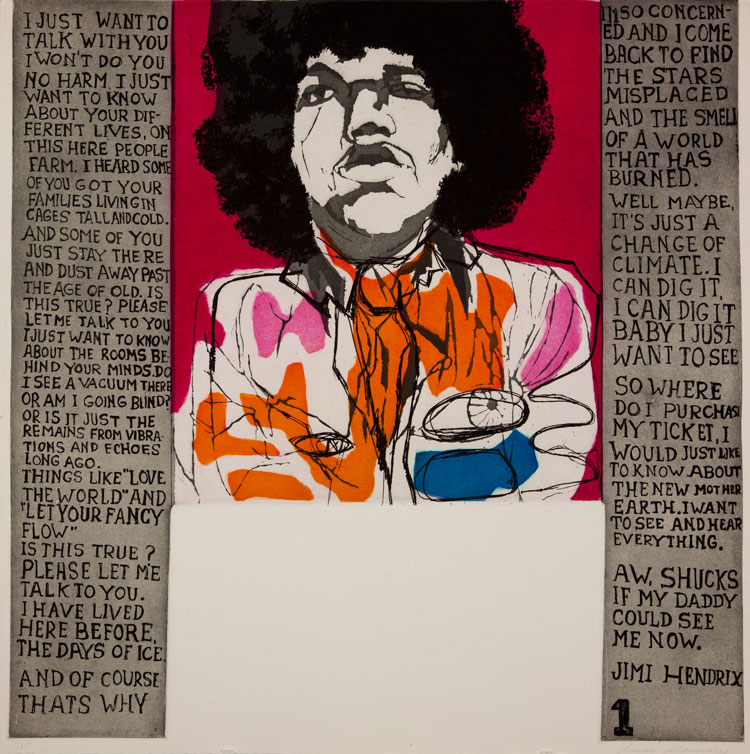
This Friday through Sunday (August 16 through August 18), we celebrate the 50th anniversary of an event that helped define a generation. Michael Lang, one of the original festival’s organizers, has asserted that, “the freshness and vitality of Woodstock showcased the performers’ creative energy, and the generous, cooperative spirit of social harmony prevailed over that long, muddy weekend, despite the 20 miles of stalled traffic and the bum acid trips.”1
As we struggle through today’s proverbial “bum acid trip,” rampant with frustration, fear, and anger over our country’s current political divisions and social inequalities, let’s remember and recognize Lang’s words and the power of art to channel emotion, communicate with one another, and transform perceptions.
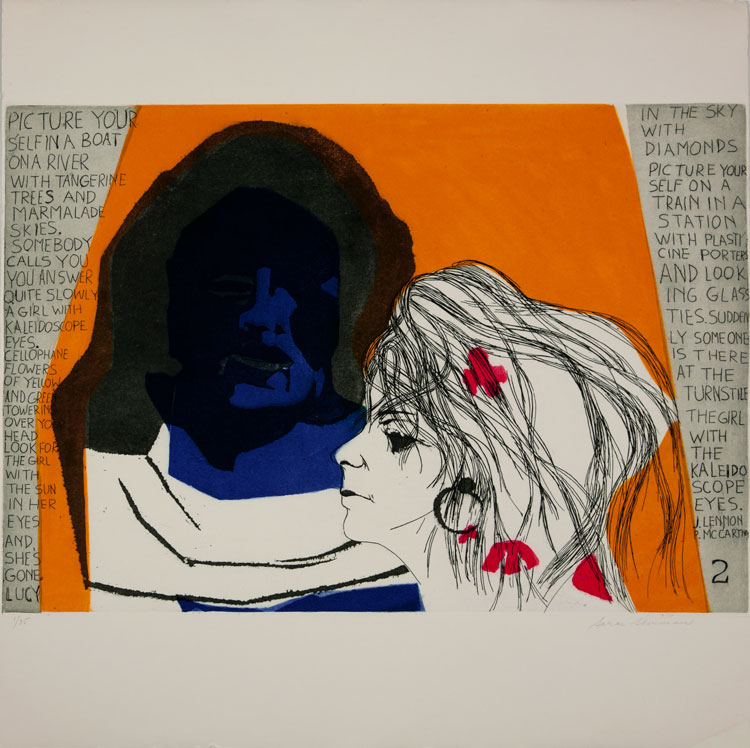
This iconic anniversary seemed the perfect opportunity to share one particular jewel from the National Academy’s large, strong, but under-recognized collection of works on paper. Speaking to the zeitgeist of the late 1960s, a portfolio of prints by Sarai Sherman (NA 1999) entitled Folk Rock, Blues & Flower Children represents and captures the lines and color, the grit, the hypnotic power, the voices and bodies, and the timelessness of Woodstock that still resonate in myriad ways 50 years later.
Sherman’s first edition portfolio consists of nine color etching and aquatint prints. Accompanying the prints is a poem by Carlo Bernari, written in Italian and printed as part of the portfolio. Sherman spent part of her career in Italy, having received a Fulbright Grant to study there in 1952 – 1954. She and Bernari collaborated on at least two occasions. A translated version of the poem is housed in our collection files and reproduced below. Its haunting words feel all too familiar today.
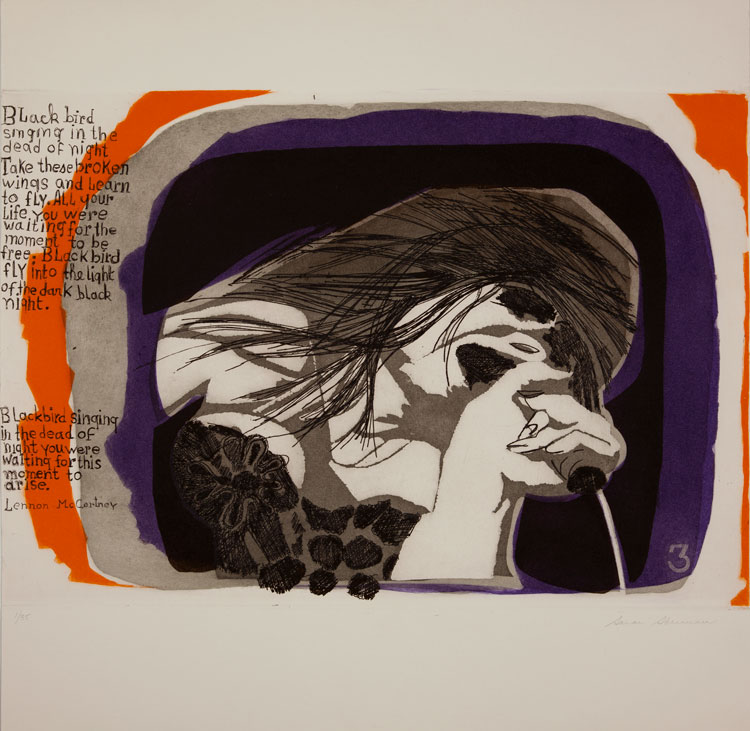
I AM A KNOT, A SPECK. 2
by Carlo Bernari
—IT’S SO DIFFUSE—BEING ALIVE.3
ALL ABOUT ME HO CHI MINH IS DYING.
THE WALLS UTTER IT, THE VOICES
THAT ENTER IN THE ROOM.
THE RECENT DEATHS RENDER RIDICULOUS
MY BEST FEELINGS WITH AN ABSENCE
MORE VIVID THAN MEMORY.
—IT’S SO DIFFUSE—BEING ALIVE.
WHILE HO CHI MINH DIES, NOT AS MALCOLM
OR LUTHER, OR AS JOHN OR BOB,
DYING IN THREE SLOW SYLLABLES,
EXTINGUISHING THEMSELVES AS THEY
ARE PRONOUNCED.
—IT’S SO DIFFUSE—BEING ALIVE: I MUST INVENT
IN THIS VILLAGE ROOM WHERE JOHN REED WROTE
THE TEN DAYS THAT SHOOK THE WORLD;
THE ROOM FACES AN OLD AIR SHAFT
STILL ECHOING THE NIGHTLY STEPS
OF CUMMINGS IN THOSE YEARS OF VIVA.
MY EARS STRAIN TO THE OTHER SIDE
BEYOND THE STEPS OF REED AND CUMMINGS,
BEYOND THE FESTERING GREEN,
TO OTHER DARKENED WINDOWS, TO THE RADIO,
TO THE TV.
THEY SAY HO CHI MINH IS DYING.
—ROCK, ROCK, ROCK THE CASKET HERE
—IN THE MOONLIGHT.4
SO IT HAPPENS ONCE EVERY FIVE HUNDRED YEARS
THAT ONLY THE DEAD CAN ENTER AMONG THE LIVING.
—IT’S SO DIFFUSE—BEING ALIVE.
IN THIS ROOM WHERE JOHN REED WROTE
THE TEN DAYS THAT SHOOK THE WORLD
I AM A KNOT, A POINT OF CONVERGENCE
FOR ALL THE TRACKS OF WAR, OF CARNAGE, OF DEATH,
PROTEST, REVOLT, OF ANGER.
—BY NOW A NORMALITY: DEATH A DISTRACTION.
—THERE IS SUCH A MARVELOUS SILENCE
—UNDER THE PLATE GLASS OF CASKETS.
I MUST FEIGN LIFE TO KNOW IF MY PROTEST IS THAT WHITE
ONE BETWEEN THE BLACK AND YELLOW
ONLY TO REALIZE THAT THEY RESEMBLE EACH OTHER.
—AND WHY DID RICHARD WRIGHT—LIVE ALL THAT WHILE
—IN PARIS—INSTEAD OF COMING HOME TO DECENT DIE
—IN HARLEM OR THE SOUTH SIDE OF CHICAGO
—OR THE WOMB OF MISSISSIPPI?5
—IT’S SO DIFFUSE—BEING ALIVE.
EVEN IN THIS OCEAN OF MASSACRE:
VIETNAM OR GREECE,
INDONESIA OR BOLIVIA, SANTO DOMINGO
OR PRAGUE, OR DETROIT, OR NEWARK;
THEY ALL PASS HERE, BY WAY OF AN INVISIBLE
POLARITY, FORGOTTEN IN A ROOM
THAT WAS OF JOHN REED. LISTENING
AFTER HO CHI MINH’S DEATH, A DISK OF DONOVAN
AND THEN ONE OF HENDRIX:—SO BEGINS ANOTHER SPRING—GO AHEAD
—MR. BUSINESSMAN, YOU CAN’T DRESS LIKE ME.6
—JOYFUL MEN
—WITH MODERN UNIFORM
—CREASED AND STEAMED
—WHO DRESS YOUNG BOYS OFF TO WAR
—IN THEIR OWN IMAGE
—SUGAR REFINED FACES
—AUTOMATIC WEAPONS FAST OF FIRE
—MAGGOTS OF THE FACTORY IN THEIR BLOOD
—THAT GROWS HOT FROM TOO MUCH BLOOD.
—TOO MANY RUSHING NATIVES HOWLING STRANGE RAGE
—VIETNAM LOS ANGELES SANTO DOMINGO
—HARLEM
—THE BRITISH OF THE EIGHTEENTH CENTURY
—LINED UP AGAINST THE COLONIALS
—IN PLATOON ORDER
—TO EMPLOY MAXIMUM FIREPOWER
—YET THE FARMER OF THE FIELD
—PREVAILED
—NOW IT IS THE TWENTIETH CENTURY
—THESE ARE THE YEARS OF YIN
—FROM KOREA TO VIETNAM
—YALTA TO GENEVA.7
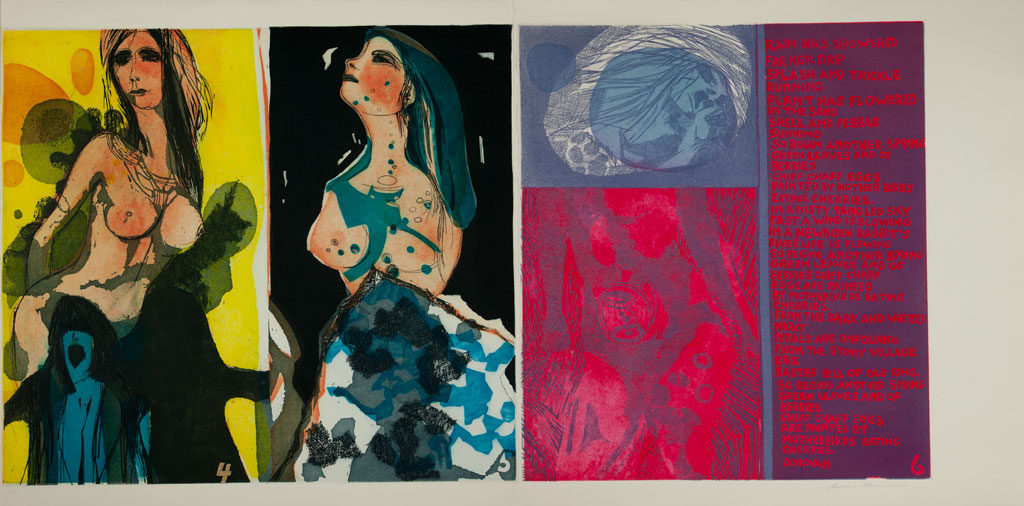
—IT’S SO DIFFUSE—BEING ALIVE.
ONE FEELS ALIVE ONLY IN THE THOUGHT OF DEATH,
OF WAR, OF MASSACRE, PERSECUTED BY THE WAR.
A TRAUMA OF INFANCY.
THEY WERE WEANING ME WHEN
THE WOMEN CAME TO THE STOOP
TO SPEAK OF WAR TO MY MOTHER,
WHO, LISTENING, GAVE ME BACK
THE VICARIOUS BREAST.
MY COUNTRY SENT FRESH SONS
AGAINST THE BLACK AFRICANS
TO REPEAT DEFEATS AND USELESS VICTORIES,
CIRCUMSCRIBED BY HORRORS: PICTURE POSTCARDS:
BLACKS HUNG IN ROWS;
OR STAKED IN THE BURNING DESERT SAND WHILE ROYAL CAVALRY
BEAT A RING WITH RAGING HOOF;
LYNCHING LEGALIZED BY THE WORD WAR.
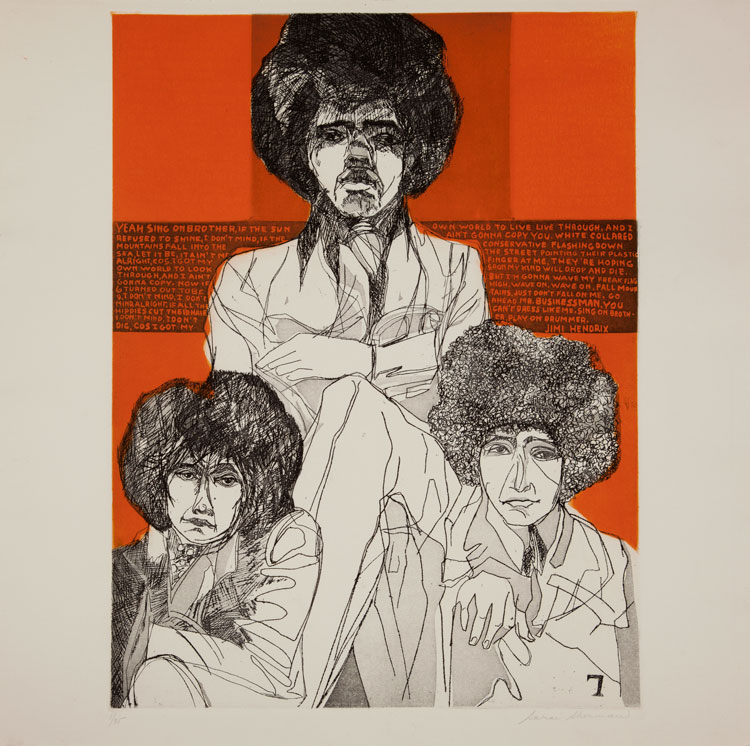
I WAS SIX WHEN ONCE AGAIN THEY TALKED OF WAR
TO DEPRIVE ME OF BREAD, BUTTER AND SUGAR,
SO THAT FAMISHED, I MIGHT ACQUIESCE
TO THEIR HYMNS OF GLORY; REPEAT WITH THEM
THAT IT WAS NOT A WAR LIKE THE OTHER WARS
BUT THE GREAT WAR.
—I HEARD A YOUNG MAN SAYING8
—WAR
—THERE’S TALK OF WAR
—ANOTHER DECADE ANOTHER WAR
—ONE GROWN UP GENERATION TOWARD WAR.
—SOMEHOW I PLANNED ON LIVING
—WHAT’S THE MATTER WITH ME?
—“WAR THERE’S TALK OF WAR.”
—I A WOMAN LISTENED AT THE DOOR,
—BY THE BROKEN HINGED DOOR
—“I SOMEHOW PLANNED ON LIVING.”
—HOORAH MY COUNTRY, O OPEN TOMB
—THEY THREATEN US WITH THEIR CROSS OF GOLD.
—SHE FORGAVE ME, MY MOTHER,
—IF IN THE DELIRIUM OF THOSE COWARDLY DAYS
—UNKNOWINGLY I DIED
—IN ORDER TO UNDERSTAND.
SO AGAIN I FOUND MYSELF AT WAR, MATURE:
FATHER AS MY FATHER: MY SON AS I,
IGNORANT, STRAINING TO THE VOICES AT THE DOOR: WAR.
TO MAKE IT MORE BEAUTIFUL, GREATER
THAN MY FATHER’S THEY CALLED IT WORLD WAR.
HO CHI MINH WAS AGAIN AT WAR. SHUT UP, ALIVE
IN HIS TOMB, BEFORE AUTUMN AND WAR
HAD SET DOWN UPON THE RAVAGED RICE FIELDS.
—HOW LONG HAVE WE DONE NOTHING ELSE BUT DIE?
—I KNOW THAT MY LIFE IS FULL OF DANGER
—TO LIVE ONE’S LIFE IS MORE AND MORE DIFFICULT
—WHAT IS IT TO THE PRISONER, AUTUMN WITH ITS SONG?
—ONLY ONE SONG TOUCHES HIM: TO HAVE HIS FREEDOM.9
“LIBERTY” REPLIES THE ANONYMOUS BLACK VOICE.
ERUPTING FROM THE DARKNESS THAT HAS ENVELOPED MY ROOM,
JOHN REED’S:
—OH FREEDOM, OH FREEDOM
—OH FREEDOM OVER ME.
—AND BEFORE I’LL BE A SLAVE
—I’LL BE BURIED IN MY GRAVE
—IT’S SO DIFFUSE—BEING ALIVE.
—AND HORRIBLE HORSEMEN OF THE APOCALYPSE
—RAISE THE FLAG OF WAR.10
CHE GUEVARA AS HO CHI MINH, AS THE BLACK POET,
ALL PLANNED TO LIVE; SO MUCH THAT TO LIVE ONE’S LIFE
DAY BY DAY BECOMES MORE DIFFICULT.
HANOI AND ATHENS AND CUBA AND BOLIVIA AND PRAGUE
AND DETROIT; JACK PALACK AND EMMET TILL AND
CHE GUEVARA AND LAMBRAKIS AND MALCOLM AND
LUTHER KING AND KENNEDY: THEY ALL PLANNED ON LIVING.
ALSO THE LIFE OF ANOTHER, OR A THOUSAND OTHERS HADN’T
HAD THEIR PART OF LIFE.
THEREFORE TO BE A VIET, OR A BLACK, OR
A GREEK ON A PARCHED ISLAND… TO BE A GREEK COLONEL
OR A G.I. JOE SEEDING DEATH.
A CRY TOWARD THE HEAVENS: YOUR WILL THAT I BE FASHIONED
IN YOUR IMAGE, OH LORD, WHY DO YOU PRETEND TO HATE ME SO?
WHY MAKE US EQUAL IF WE ARE ONLY EQUAL IN DEATH;
PENURIOUS WITH LIFE, DENYING US LIBERTY, NOT PAIN;
OMITTING JUSTICE BUT NOT THE CONTINUUM OF RAZOR EDGE
BANALITIES THAT CUT US UP SOLELY BECAUSE WE
WERE BORN TO THIS PLANET? WHY BLESS THE MURDERERS?
—IT’S SO DIFFUSE—BEING ALIVE
—I SOMEHOW PLANNED ON LIVING.
—DIDN’T WANT ME TO EAT WITH YOU.
—SCARED I MIGHT SIT WITH YOU,
—BUT WITH THAT ATOM BOMB, JOE,
—LOOKS LIKE I’M GONNA DIE WITH YOU.
—WHAT DO YOU THINK, IS IT TOO LATE
—TO MAKE THE A-BOMB SEGREGATE?
—IT’S SO DIFFUSE—BEING ALIVE.
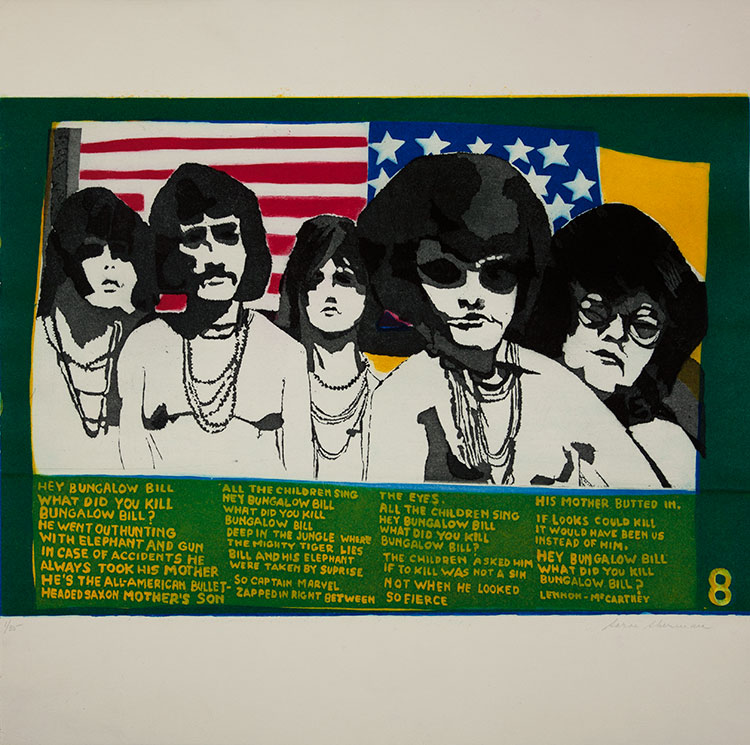
—I SOMEHOW PLANNED ON LIVING.
—TO LIVE ONE’S LIFE IF MORE AND MORE DIFFICULT.
THE RECENT DEATHS RENDER OUR FEELINGS
RIDICULOUS; EVEN OUR FEARS.
—BUT BEFORE I’LL BE A SLAVE
—I’LL BE BURIED IN MY GRAVE.
ALONE, IN THIS ROOM, JOHN REED’S,
HARDLY A BOND, A SPECK.
BUT THOUSANDS AND THOUSANDS OF MAGNETIC WAVES
CAN PASS THROUGH ME.
FROM EVERY DIRECTION: ANYWHERE, EVERYWHERE,
THERE IS LIFE AND DEATH.
ONE NEED ONLY PUT PENCIL TO PAPER. EASY,
THAT’S ME, A SPECK: BLACK AND WHITE AND YELLOW.
HANGMAN AND HANGED.11
— VILLAGE, SUMMER 1969
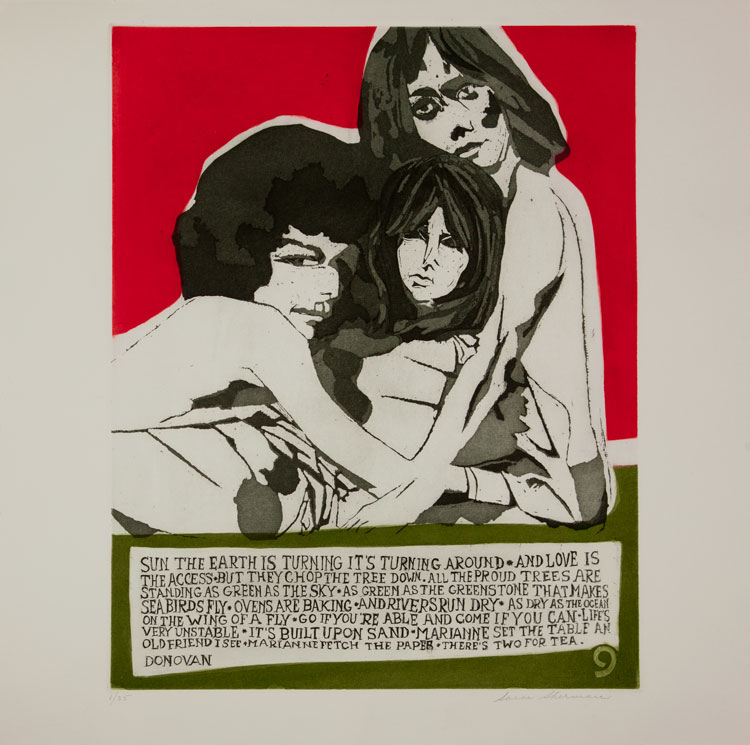
Diana Thompson is Director of Collections and Curatorial Affairs at the National Academy of Design. She is the co-curator of For America, a major traveling exhibition of 100 paintings from the Academy’s permanent collection accompanied by a richly illustrated scholarly catalogue that opened at the Dayton Art Institute in Ohio earlier this year, and will travel to the New Britain Museum of American Art in Connecticut this fall (October 16 – January 26, 2020), followed by additional US venues through early 2022. In addition, she recently began a multi-year initiative to digitize the entire collection for the NA Database, a comprehensive online educational resource that will include archival materials, biographies, and video documentation pertaining to the Academy’s membership, history, and artworks.
- Johnson, Reed, “What is Woodstock’s legacy?” Chicago Tribune, August 9, 2009
- The following footnotes from Astoria Press, edited for clarity, accompany the translated version of Bernari’s “I AM A KNOT, A SPECK.” In this mélange of prose poetry (indicated by a dash preceding each line) are quotations taken from works by other authors.
- “Look for You Yesterday, Here You Come Today” by Amiri Baraka, from the anthology Negri U.S.A: Nuove Poesie e Canti della Contestazione Negro-Americana (Negroes USA – New Poems and Songs), edited by Giovanni Menarini (Florence 1969)
- “The Pale Blue Casket” by Oliver Pitcher, from the anthology Negri U.S.A: Nuove Poesie e Canti della Contestazione Negro-Americana (Negroes USA – New Poems and Songs), edited by Giovanni Menarini (Florence 1969)
- “Horn of Plenty” by Langston Hughes, from the anthology Negri U.S.A: Nuove Poesie e Canti della Contestazione Negro-Americana (Negroes USA – New Poems and Songs), edited by Giovanni Menarini (Florence 1969)
- “The Lullaby of Spring” by Donovan and “If 6 Was 9” by the Jimi Hendrix Experience
- “Yin Years” by Amiri Baraka, from the anthology Negri U.S.A: Nuove Poesie e Canti della Contestazione Negro-Americana (Negroes USA – New Poems and Songs), edited by Giovanni Menarini (Florence 1969)
- “I Heard a Young Man Saying” by Julia Fields, from the anthology Negri U.S.A: Nuove Poesie e Canti della Contestazione Negro-Americana (Negroes USA – New Poems and Songs), edited by Giovanni Menarini (Florence 1969)
- The Fire Next Time by James Baldwin
- “Oh, Freedom” by anonymous Black folk singers, from the anthology Negri U.S.A: Nuove Poesie e Canti della Contestazione Negro-Americana (Negroes USA – New Poems and Songs), edited by Giovanni Menarini (Florence 1969)
- Additional works quoted, alphabetical by author:
“Theory of Hope” by Vitezslav Gardavsky, from the anthology August 21st – Prague Isn’t Silent, edited by Milena Novakova
“Now the Pain” by Josef Kainar, from August 21st
“Arrest” and “Autumn Night” by Ho Chi Minh
“Boredom on a Snowy Night” by Milan Misarek, from August 21st
“Ode for the Return of Karel Hynek Mácha” by Vítězslav Nezval, from Homage to Prague, edited by Giovanni Giudici (Scheiwiller, Milan 1968)
“Between the World and Me” by Richard Wright, from the anthology Negri U.S.A: Nuove Poesie e Canti della Contestazione Negro-Americana (Negroes USA – New Poems and Songs), edited by Giovanni Menarini (Florence 1969)
“Sympathy” (author unidentified), from Negri U.S.A
Unidentified works by Ray Durem, David Henderson, Le Roi Jones, and other anonymous Black folk singers, from the anthology Negri U.S.A
